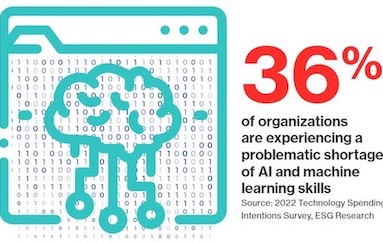In today's fast-moving IT landscape, data inundation is a ubiquitous challenge for solution providers and their customers. Driven by regulatory mandates and a foresight for future utility, data collection has burgeoned to unprecedented levels. But within this deluge lies a golden opportunity for businesses—a realization encapsulated in what Jason Hardy, CTO, Artificial Intelligence & X-Portfolio at Hitachi Vantara, terms the "aha moment."
According to Hardy, companies are awakening to the potential of AI-based data analytics, transcending the old notion of data archiving for future deliberation. "Traditionally, companies were saying, ‘Just archive it, and we’ll figure out what to do with it later.’ That’s turned into a ‘No, this actually impacts us now,'" he says, in a Hitachi Vantara and MIT Technology Insights Report. The imperative to harness data in real-time, processing and inferring against it, has become paramount across every industry.
From manufacturing to consumer-focused enterprises, and supply chain-dependent sectors, AI holds the key to unlocking actionable insights. Improved analytics can optimize yield, curtail waste, enhance efficiency, and even discern consumer emotional responses or satisfaction levels with precision. In supply chain management, AI's predictive capabilities preemptively identify and mitigate potential faults, bolstering operational resilience.
Overcoming Bumps in the AI Roadmap
However, despite the burgeoning interest in AI, many solution providers and organizations grapple with the implementation roadmap. Hardy elucidates the prevailing sentiment among C-level executives: "We want to use AI and machine learning. We want to use our data. We want to create value from it. We actually don’t know how." The lack of clarity extends to defining the pertinent questions that necessitate answers—a critical hurdle in the AI adoption journey.
Rather than attempt an “AI for everything” approach, organizations new to advanced analytics can begin by identifying a specific problem of fundamental business importance to address with data.
Hardy underscores the need for a robust platform tailored to organizational needs, be it cloud-based, on-premises, or a hybrid approach. "We’re seeing customers who say, ‘I’ve got to jump on this AI bandwagon. I’ve got to figure this out. I need a platform to help me do that,'" he notes, emphasizing the pivotal role of adaptable data solutions in navigating the AI landscape.
Charting a Path Forward
As organizations navigate the complex terrain of data management and AI integration, success lies in not only recognizing the potential, but also charting a coherent path forward. With the right strategy and technology partners, solution providers can help customers harness the transformative power of AI to derive unparalleled value from their data assets, gaining a decisive competitive edge in an increasingly data-driven world.
Image credit: Hitachi Vantara/MIT Technology Review Insights

